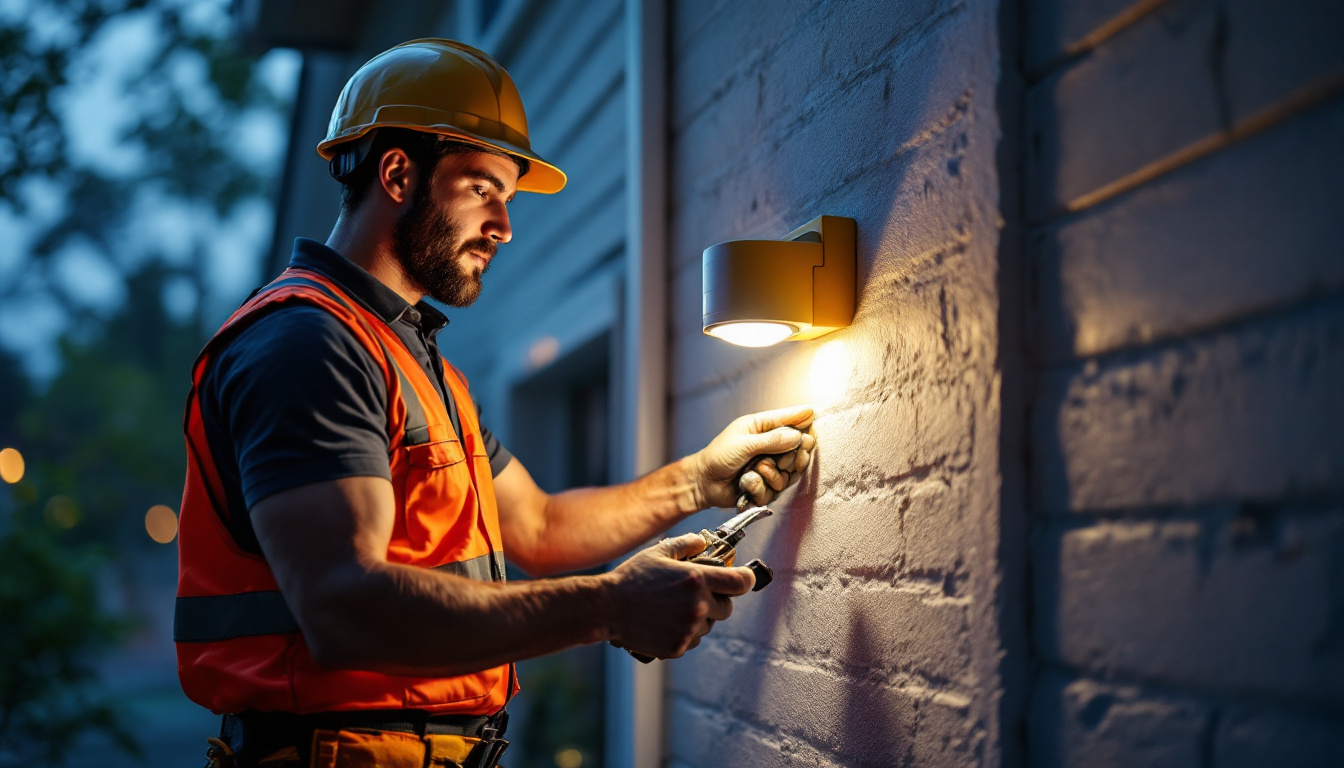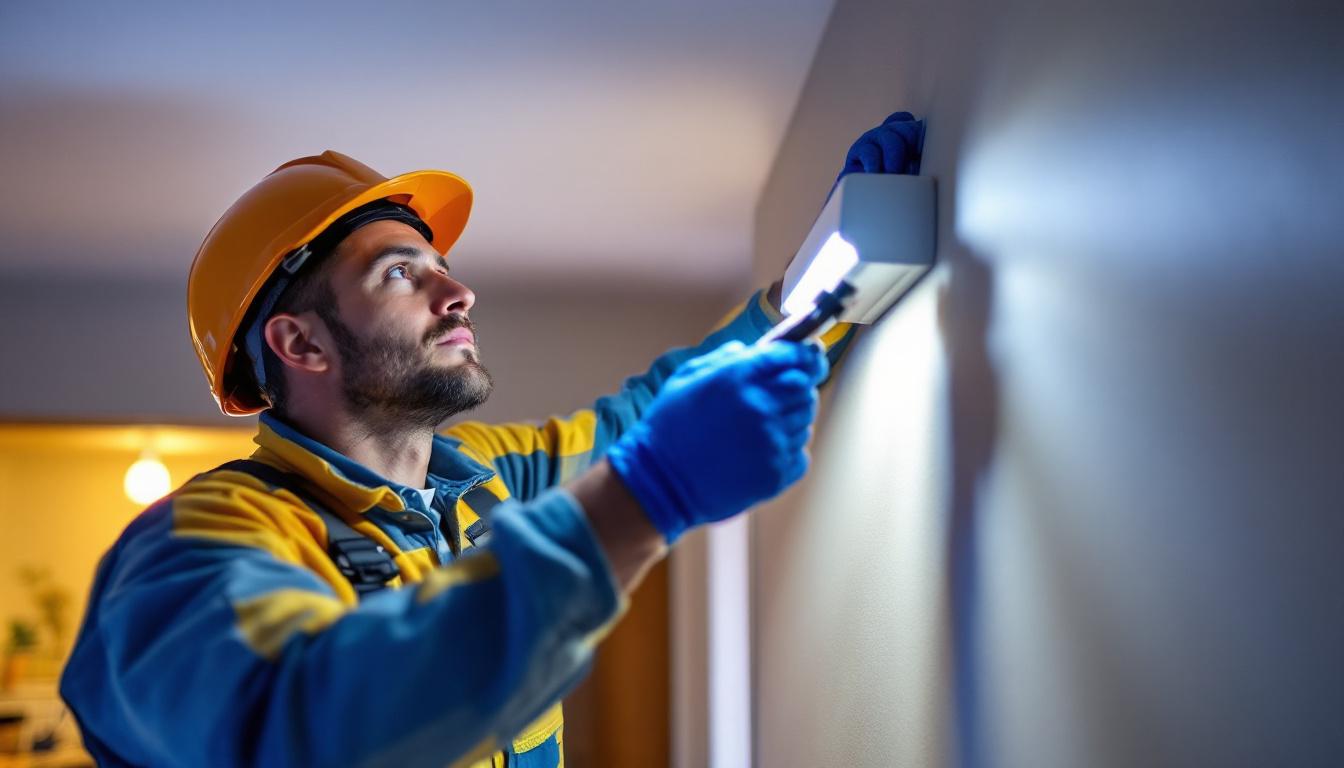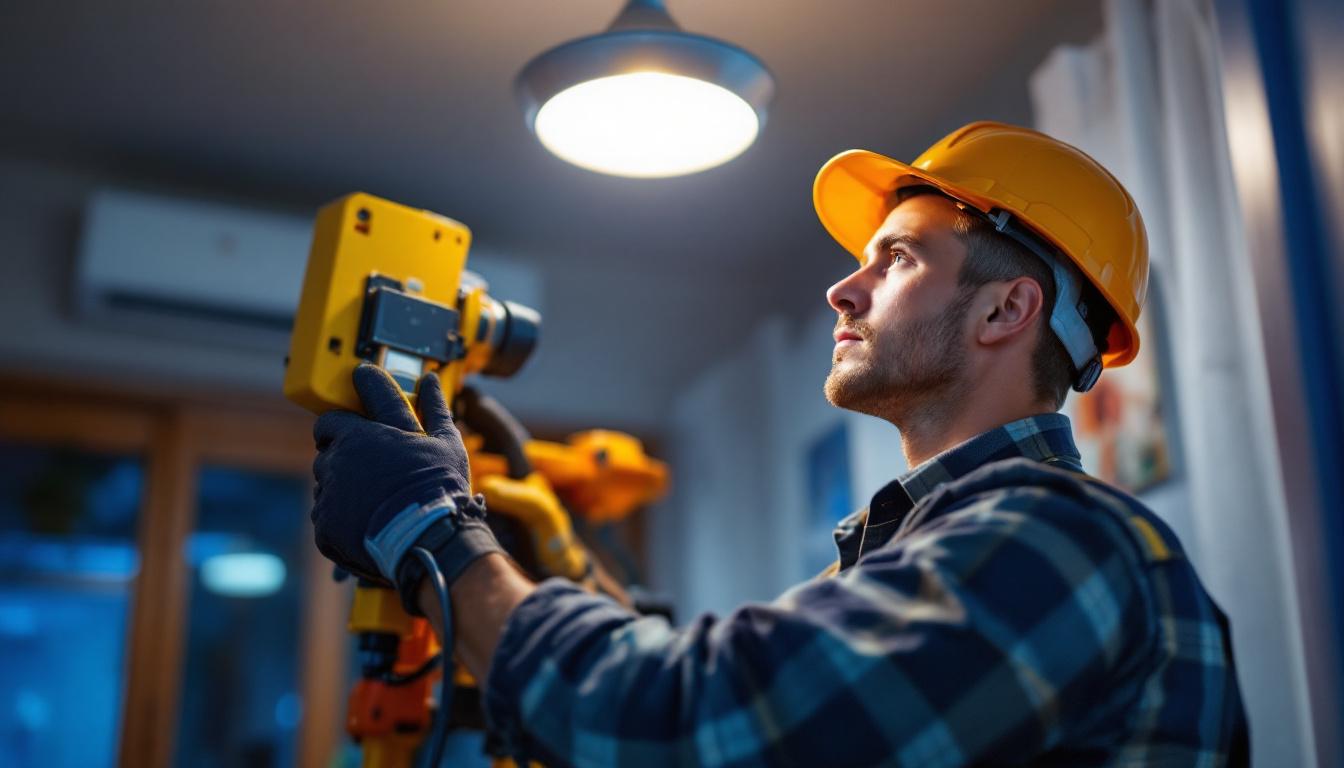
In the realm of outdoor lighting, security lights equipped with motion sensors have become a staple for both residential and commercial properties. While these systems offer enhanced safety and convenience, lighting contractors often encounter pitfalls that can compromise their effectiveness. Understanding these common mistakes can lead to better installations and satisfied clients.
Before diving into the common mistakes, it is essential for lighting contractors to have a solid grasp of how motion sensor technology operates. Motion sensors detect movement within a designated area and trigger the lights to illuminate, providing both security and visibility. This technology has evolved significantly over the years, incorporating advanced algorithms and features that enhance its functionality. For instance, some modern motion sensors can differentiate between human movement and that of animals, reducing unnecessary activations and ensuring that the lighting system is used efficiently.
The two primary types of motion sensors used in security lights are passive infrared (PIR) sensors and dual technology sensors. PIR sensors detect body heat, while dual technology sensors combine PIR with microwave technology for increased accuracy. Familiarity with these technologies is crucial for effective installation and troubleshooting. Additionally, some sensors now come equipped with adjustable sensitivity settings, allowing contractors to fine-tune their performance based on the specific environment in which they are installed. Understanding these nuances can significantly enhance the effectiveness of a lighting system.
One of the most frequent errors made by lighting contractors is improper sensor placement. Sensors need to be positioned in a way that maximizes their coverage area while minimizing false triggers. For instance, placing a sensor too close to a busy street can result in frequent activation from passing vehicles, leading to annoyance for the property owner. A well-placed sensor can cover a wide area, ensuring that the lights only activate when necessary, thus conserving energy and extending the lifespan of the bulbs.
Additionally, positioning sensors too high can limit their effectiveness. While higher placements may seem advantageous for avoiding tampering, they can reduce the sensor’s ability to detect movement accurately. Ideally, sensors should be installed at a height that balances security with optimal detection. Furthermore, contractors should consider the angle of the sensor; a slight tilt can significantly enhance its ability to detect motion across a broader area. Taking the time to assess the surroundings and adjust the sensor’s angle can lead to a more reliable and efficient lighting system.
environmental factors play a significant role in the performance of motion sensors. Contractors often overlook elements such as trees, shrubs, and even the architecture of the building itself. These can obstruct the sensor’s field of view, rendering it ineffective. For example, dense foliage can create blind spots, allowing intruders to move undetected. It is essential for contractors to conduct a thorough site assessment, identifying potential obstacles that could impede the sensor’s functionality and making necessary adjustments to the installation plan.
Moreover, weather conditions can also impact sensor performance. For instance, heavy rain or snow can obscure the sensor’s ability to detect motion. Contractors should consider seasonal changes and local climate when planning installations to ensure consistent performance throughout the year. Additionally, some sensors are designed to be weather-resistant, which can be beneficial in areas prone to extreme weather. By selecting the right equipment and understanding its limitations, contractors can ensure that their installations remain effective regardless of environmental challenges. This proactive approach not only enhances security but also builds trust with clients, as they see the long-term benefits of a well-planned motion sensor system.
Another common mistake is selecting the inappropriate type of motion sensor for the specific application. Not all motion sensors are created equal, and understanding the needs of the property is vital for making the right choice.
For example, a residential property may require a different sensor than a commercial space. Residential areas often benefit from PIR sensors, which are cost-effective and efficient for detecting human movement. Conversely, commercial spaces may require dual technology sensors to cover larger areas and reduce false alarms.
Many contractors neglect to adjust the sensitivity settings on motion sensors after installation. Default settings may not be suitable for every environment, leading to either excessive false alarms or inadequate detection of movement.
For instance, a sensor set to high sensitivity in a windy area may trigger unnecessarily due to swaying branches. Conversely, a low sensitivity setting in a busy area may fail to detect genuine threats. Testing and calibrating sensitivity settings during installation can greatly enhance the effectiveness of security lighting systems.
Another oversight is not properly configuring the duration for which the lights remain on after activation. Many motion sensors allow contractors to set the time duration for which the lights will stay illuminated once triggered. Failing to adjust this setting can lead to frustration for users.
For example, if the lights turn off too quickly, individuals may find themselves in the dark before they can reach the entrance. On the other hand, lights that stay on for too long can waste energy and increase costs. Finding the right balance is key to ensuring user satisfaction and energy efficiency.
power supply considerations are crucial for the successful operation of motion sensor security lights. Contractors often make the mistake of not adequately assessing the power needs of the installed system.
Using lights that require more power than the existing wiring can handle may lead to flickering or even complete failure of the system. It is essential to evaluate the electrical infrastructure of the property and ensure that it meets the demands of the new lighting system.
In addition to assessing the primary power supply, contractors should also consider backup power options. In areas prone to power outages, having a backup system in place can ensure that security lights remain operational even during electrical failures.
Battery backup systems or solar-powered options can provide peace of mind for property owners, ensuring that their security lighting remains functional at all times. Ignoring this aspect can leave properties vulnerable during critical moments.
Once the installation is complete, the relationship between the contractor and the client does not end. A common mistake is failing to educate clients on how to use and maintain their new motion sensor lighting systems. Proper education can significantly impact the overall effectiveness of the system.
Contractors should take the time to explain how the motion sensors work, how to adjust settings, and how to troubleshoot common issues. Providing a user manual or a brief tutorial can empower clients to use their systems effectively and address minor concerns without needing to call for service.
Maintenance is a critical aspect of ensuring the longevity and effectiveness of motion sensor security lights. Contractors often overlook the importance of advising clients about regular maintenance tasks, such as cleaning the sensor lenses and checking for obstructions.
Dust, dirt, and debris can accumulate on sensor lenses over time, diminishing their effectiveness. Encouraging clients to perform routine checks can help maintain optimal performance and prevent unexpected failures.
Before concluding an installation, thorough testing of the entire system is essential. Contractors sometimes rush through this step, leading to undetected issues that can frustrate clients later on.
Testing should include checking the motion detection range, sensitivity settings, and light duration. Additionally, contractors should simulate various scenarios to ensure the system responds appropriately to different types of movement. A comprehensive testing phase can identify potential problems and ensure the system operates as intended.
Documentation is often an overlooked aspect of the installation process. Failing to document the installation details, including sensor placements, settings, and power supply information, can create challenges for future maintenance or troubleshooting.
Providing clients with a detailed record of the installation can enhance their understanding of the system and serve as a reference for any future adjustments or repairs. This practice not only fosters trust but also positions the contractor as a professional who values transparency.
Compliance with local regulations and codes is a fundamental responsibility for lighting contractors. Unfortunately, many professionals neglect to familiarize themselves with the specific requirements that govern outdoor lighting installations.
Local codes may dictate aspects such as light intensity, placement, and even the types of fixtures allowed. Ignoring these regulations can lead to fines, project delays, or the need for costly modifications. It is crucial for contractors to stay informed about local laws and ensure that their installations adhere to all relevant guidelines.
When installing security lights, it is vital to consider the impact on neighboring properties. Poorly positioned lights can create light pollution or glare that affects adjacent homes or businesses. This can lead to complaints and strained relationships with neighbors.
Contractors should take the time to assess the surrounding area and position lights in a way that minimizes disruption to others. This consideration not only enhances client satisfaction but also fosters a positive reputation within the community.
In the competitive field of lighting installation, avoiding common mistakes can significantly enhance the quality of service provided to clients. By understanding motion sensor technology, ensuring proper placement, selecting the right sensor type, and educating clients, contractors can create effective and reliable security lighting systems.
Additionally, thorough testing, documentation, and compliance with local regulations are essential for successful installations. By taking these factors into account, lighting contractors can improve their reputation, build lasting client relationships, and ultimately contribute to safer environments for all.
Don’t let common installation mistakes undermine your security lighting projects. At LumenWholesale, we provide lighting contractors with the highest quality, spec-grade lighting products at prices that can’t be beaten. Say goodbye to local distributor markups and hello to our premium selection that meets rigorous industry standards. With free shipping on bulk orders, you can equip your installations with the best lighting solutions while keeping costs transparent and manageable. Elevate your lighting installations to the next level of quality, affordability, and convenience. Discover the ideal lighting for your next project at Wholesale Lighting at the Best Value.

Discover the transformative impact of LED light movement sensors in modern lighting projects.

Discover the essential checklist for lighting contractors focusing on LED canister lights.

Discover why General Electric LED lights are revolutionizing the lighting industry and what this means for lighting contractors.

Discover the comprehensive guide to 6-inch LED lights tailored for lighting contractors.